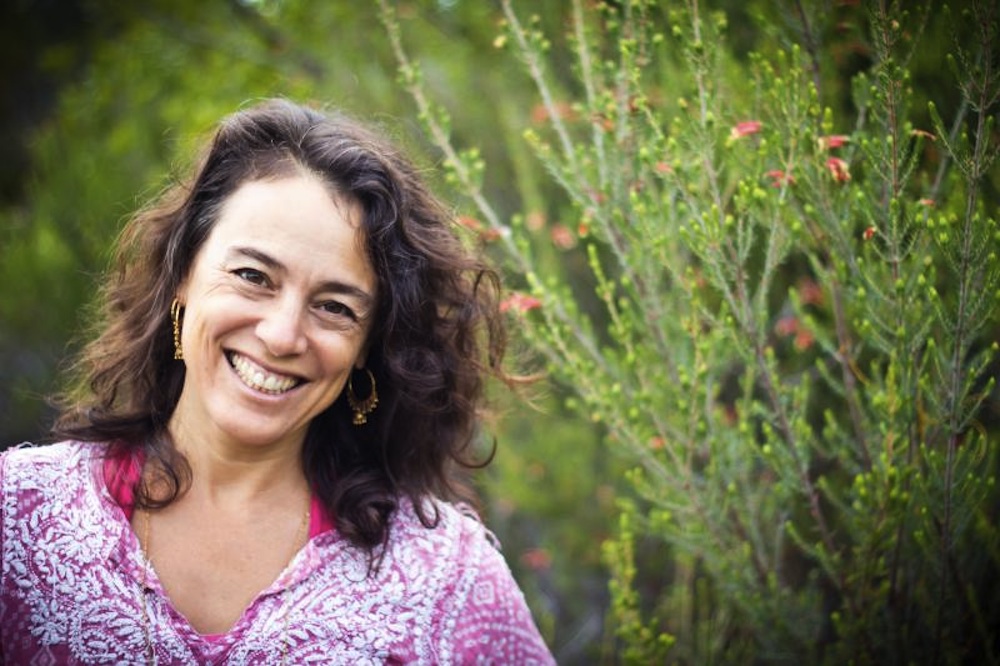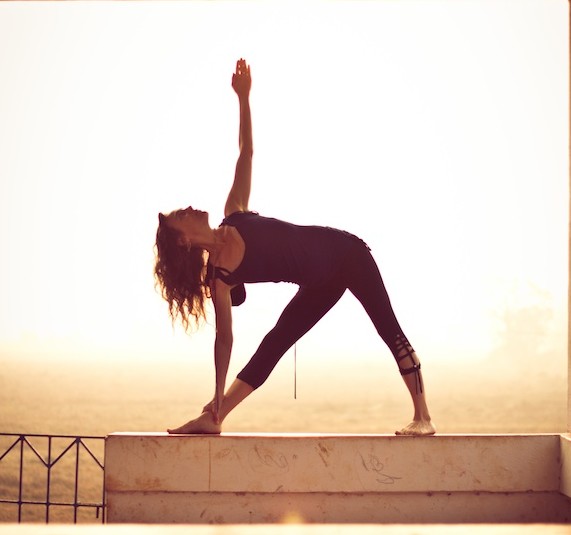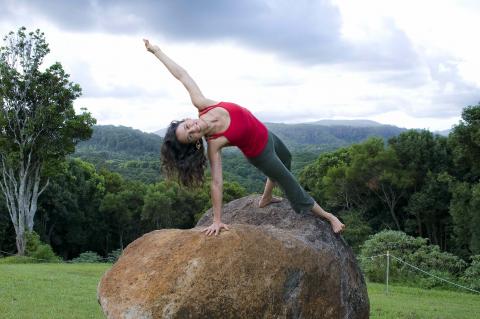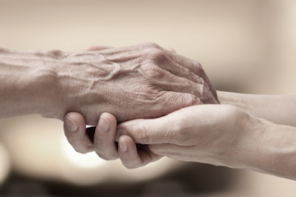When yoga instructor and health advocate Rachel Zinman first discovered she had diabetes, she felt she had somehow failed herself. During her journey towards acceptance, she found that her core beliefs helped her overcome her difficulties, plus ‘eight true things’ that revolutized her approach to chronic illness.
Some people think I live the ideal life. I teach yoga, travel worldwide and have a stable loving partnership. But things aren’t always as they appear.
In 2008 I was diagnosed with diabetes. The diagnosis floored me. How could someone like me – a yoga teacher and a health and wellness advocate get diabetes? And worse why didn’t I recognise the signs?
It’s been a long eight years and I’ve learned many valuable lessons as part of my personal journey back to health. In fact, it’s driven me to pursue my passion for writing. I’ve written a book for people just like me who are longing for simple and effective ways to achieve radiant health through yoga and ayurveda. To get this book out there I’ve set up a crowdfunding campaign. If you’d like to support me in this dream of helping others the site is: https://www.pozi.be/yoga4diabetes
Looking back I’m convinced my health issues started when I was living in New York City during 9/11. I had moved from Byron Bay to New York City to support my-then husband who had dreams of landing a job in radio. We were crazy. We sold everything we had, rented out our four-bedroom mud brick home in Goonengerry, in the hills behind Byron Bay and moved to New York City with absolutely no idea how we would survive financially. Miraculously not long after our arrival things fell into place. I landed a job at one of the biggest and most well known yoga studios not only as a yoga teacher but as one of the co-creators and mentors of their teacher training program.
And then 9/11 happened. It was impossible not to be shocked, disoriented and overwhelmed. I don’t think I ever really recovered emotionally or physically. Six months later I started experiencing a lot of strange physical symptoms. Things like tingling in my fingers and toes, difficulty concentrating, insomnia, a feeling of being overly expanded, frequent urination, hives and skin rashes, racing heartbeat, difficulty digesting and many more things which turned my previously healthy life into a living hell.
I now know that all the various symptoms happened because my immune system had turned in on itself and was attacking the insulin producing cells in my pancreas. Diabetes runs in the family and the stress had triggered the gene. But at the time I was deeply confused and frustrated because no matter what I did, no matter how many doctors I saw, I just couldn’t get better.
When I was finally diagnosed nearly eight years later, my doctor thought I was pre-diabetic. We discussed the possibility that if I changed my diet and increased my intake of various essential nutrients like Vitamin B12 and Iron that there was a chance things would normalise. I took what he said as a sign of hope and assumed whole-heartedly that yoga would come to the rescue. And for a year I succeeded. However, by the end of the year and after more testing my doctor informed me that my high blood sugar was being caused by an autoimmune disease.
I’ve always been rebellious. My dad calls me a crunchy granola girl. It’s why I moved to Byron Bay in the early 80’s and chose to live an eco-friendly, yoga-loving lifestyle instead of a fast-paced city life.
But being rebellious has its drawbacks. I refused to believe that my condition was incurable and set about trying everything from acupuncture, to herbs, homeopathy and ayurveda. The more I searched for answers the more confused I became.
I was told it was a parasite, a weak spleen, too much heat in my liver. Everyone kept telling me that I couldn’t possibly be diabetic, I was too healthy, too fit. But what people think and what’s actually true are two different things. There’s a lot of misinformation out there about diabetes. Most people think of it as a lifestyle disease. They don’t even realise there’s more than one type. And I was one of those people too – there I was living with the disease thinking it was something else. Anything else would have been better than what I actually had.
And then I hit rock bottom. Rock bottom for me was dragging myself up hills to try and get my blood sugar down. I was eating green veggies and eggs and nothing else. I started losing weight, peeing relentlessly and had less and less energy. My blood sugar levels crept up to unsafe levels. Something had to change.
The hardest thing I’ve ever done is face failure. I’m someone who prides myself on being strong and capable. So when I dragged myself to the doctor and admitted I couldn’t do this on my own we both breathed a huge sigh of relief.
At last I was willing to listen. He told me I had LADA diabetes. Latent Autoimmune Diabetes in Adults. It’s called type 1.5. In type 1 the pancreas doesn’t produce enough insulin, in type 2 the body resists the insulin. In type 1.5 there are aspects of both. His recommendation was to start Insulin injections. One shot a day.
When I stood on my yoga mat that evening I couldn’t stop crying. I felt so relieved. Finally I had an answer to why I just couldn’t get well. Insulin, I realised, wasn’t a bad thing – it was going to save my life.
Insulin gave me back my energy and inspired me to get informed. One of the first things I did once I accepted my diagnosis was to go online and join some support groups. To my surprise I discovered a global community – people just like me living with diabetes and thriving.
Once I looked back at the timeline of my illness and understood a bit more about the complexity of the disease I realised that rather than failing me yoga had been my constant companion. Things could have been much worse. My passion for practice and the depth of my understanding had actually kept the disease from progressing faster.
In my 30 years of experience I can absolutely vouch for yoga and its benefits. Yoga works.
Diabetes is a stressful disease, you’re on call 24/7. You have to literally think like a pancreas using medication to mimic what the body does automatically. Just one miscalculation can threaten your life.
With all these challenges in play it’s hard not to fall prey to emotions. That’s where my yoga practice has helped me cope. Every time I stop, drop and breathe I feel better. Every time I stretch and focus my mind on a posture, the worry melts away. Each time I practice a simple meditation I gain perspective.
Reaping the benefits of my practice while living with a chronic condition has inspired me to write a book to share how yoga can be incorporated into a daily diabetes management regime. And what’s in the book isn’t just for people with diabetes, Anyone can benefit from bringing simple yoga practices into their daily life. In fact here are eight things you can do every day to feel your absolute best.
Rachel’s eight-point list
Wake up just before sunrise, sit quietly and take a few moments to feel grateful.
Find a physical practice that inspires you, it could be yoga, walking in nature, swimming in the ocean. Whatever it is just do it!
Take a few moments for reflection and stillness. You don’t need to label it. Just stop for a moment and be.
Eat fresh, wholesome and organic foods.
Express your creativity in a way that nurtures you.
Make time for your friends and reach out for support.
Sleep when you’re tired. Eat when you’re hungry. And laugh and cry when you feel the need.
Explore life’s deeper meaning. Understanding yourself and your relationship with creation is vital to being able to accept whatever comes along.
Rachel Zinman is a senior yoga teacher and teacher trainer with over 30 years experience teaching nationally and internationally. She is currently completing a book on Yoga for Diabetes. If you’d like to preorder a copy or want more info visit https://yogafordiabetesblog.com/yoga-for-diabetes-book/ <https://yogafordiabetesblog.com/yoga-for-diabetes-book/> and her blog https://www.yogafordiabetesblog.com







